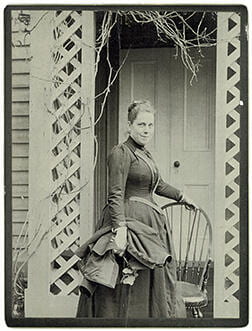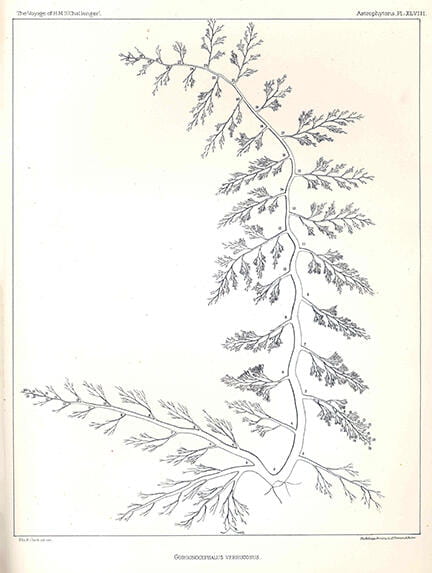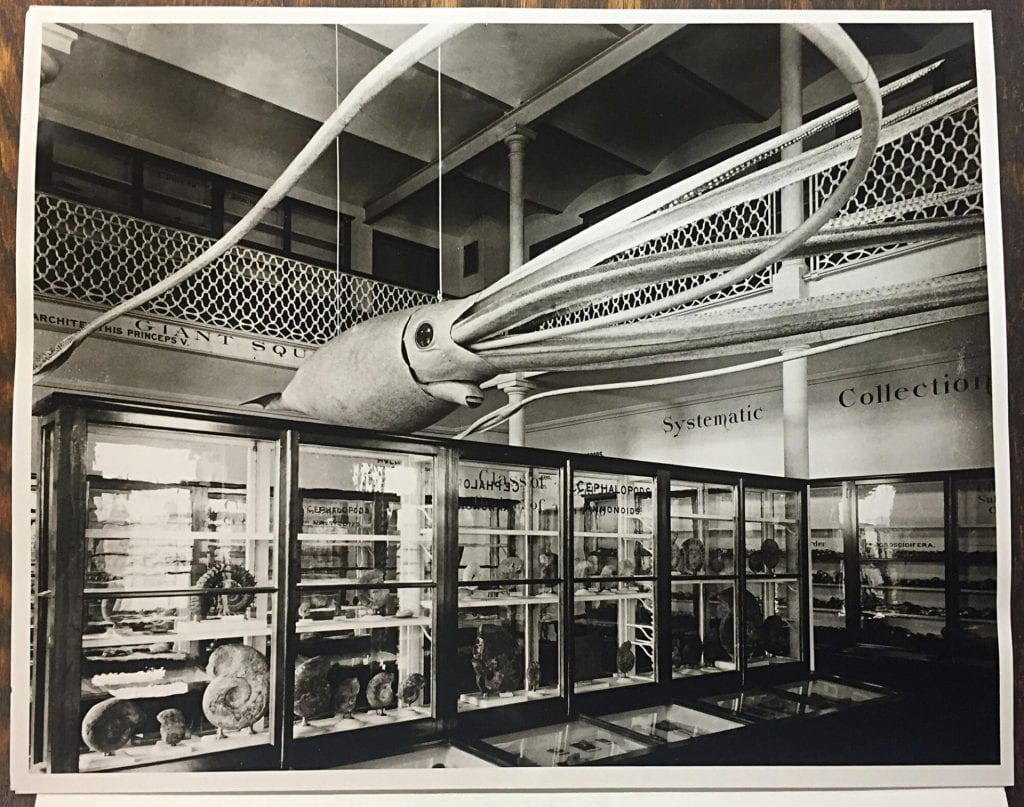Finding Work
“We have had a number of young ladies as assistants in the Museum this year, and have found them very efficient and faithful workers. . . Both as students and as assistants they have shown an apt intelligence, with great fidelity and conscientiousness in the performance of their work.”
– Annual Report of the Museum of Comparative Zoology, 1869
Leveraging Connections
The women hired to work at the museum arrived in different ways. Some assistants came to the museum through family connections.
In 1869, Elisabeth Lyell Anthony began working alongside her father, John Gould Anthony, who was then the curator of conchology, and she helped him sort and label thousands of shells and prepare them for future exhibitions.
Similarly, in 1893, Bertha Parker began working as a museum assistant soon after her brother George began as an instructor of zoology at Harvard. Other assistants may have learned about the opportunity to work at the museum while attending a school run by Elizabeth Agassiz. Later, Radcliffe students would study biology in classrooms upstairs from the museum’s public galleries.

Elizabeth Hodges Clark
This photograph of Elizabeth Hodges Clark was likely taken around the time she began working at the museum in 1873.
As an assistant, she classified marine specimens and she likely helped to unpack and inspect the Blaschka glass flowers and invertebrates when they arrived at the museum. She later became Alexander Agassiz’s personal secretary while he was director.
In addition to handling correspondence with donors, collectors, and other institutions, Clark frequently ran the museum when Agassiz was away.
Courtesy of the Ernst Mayr Library ©President and Fellows of Harvard College
Illustrated Plate by Elizabeth Hodges Clark
The publications of the museum’s curators sometimes included detailed illustrations created by assistants, which reveal how closely they worked together and shared their skill and expertise. Elizabeth Hodges Clark also prepared this illustration, which was published in a report on the voyage of the H.M.S. Challenger written by curator Theodore Lyman.
Courtesy of the Museum of Comparative Zoology ©President and Fellows of Harvard College


Limited Opportunities
Within a decade of the museum’s founding, curators began describing the relatively new addition of women to the museum’s workforce, praising their capabilities and noting their contributions to the ongoing work of cataloguing collections and preparing materials for exhibition.
During the late nineteenth century, the kinds of jobs available to women tended to be quite limited, and the Museum of Comparative Zoology was no exception.
The only women who worked at the museum during this period were white, and they were hired as assistants and secretaries, not as professors or curators.
They were also paid less than their male colleagues.
MCZ Exhibit Gallery, 1892
Courtesy of the Harvard University Archives ©President and Fellows of Harvard College

Chart Showing Museum Salaries, 1881-1884
This record of MCZ salaries from the 1880s lists the names of women who worked as assistants—and also shows their relatively low pay compared to curators and professors.
Courtesy of the Ernst Mayr Library and Archives of the Museum of Comparative Zoology ©President and Fellows of Harvard College